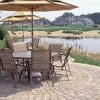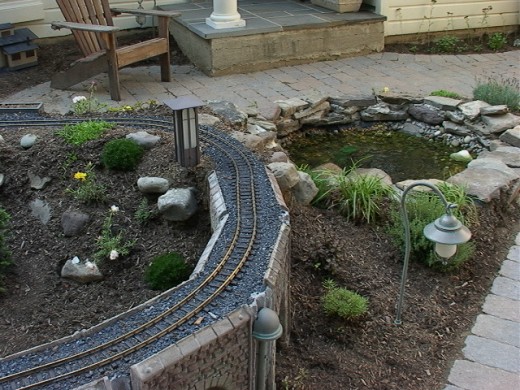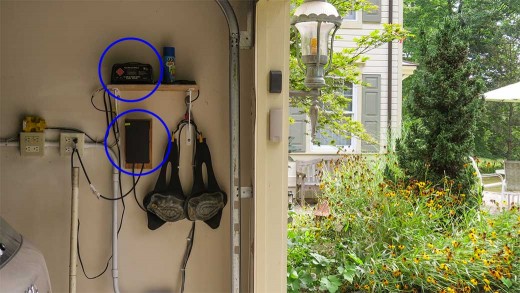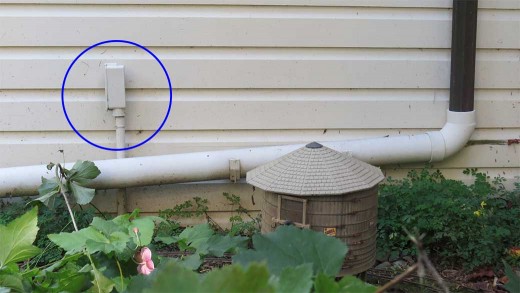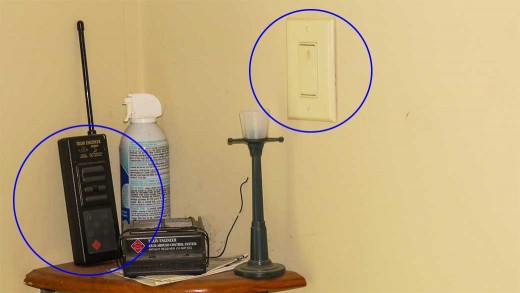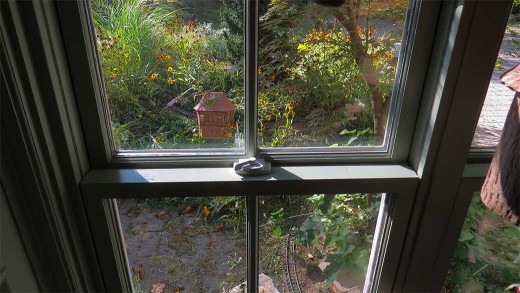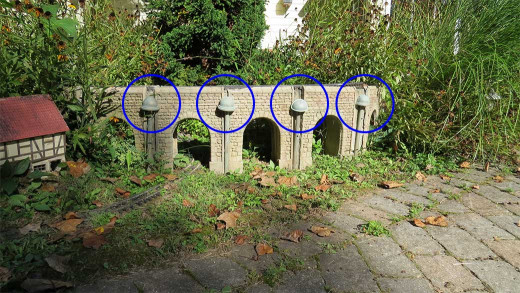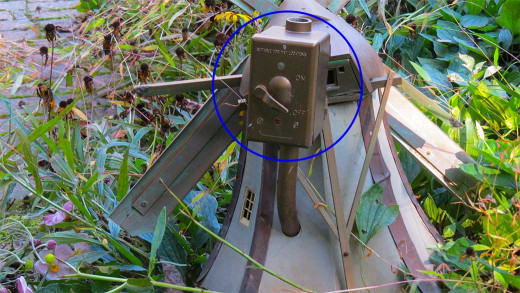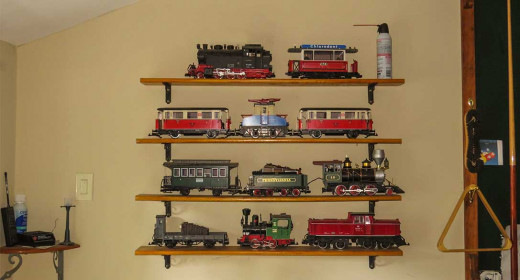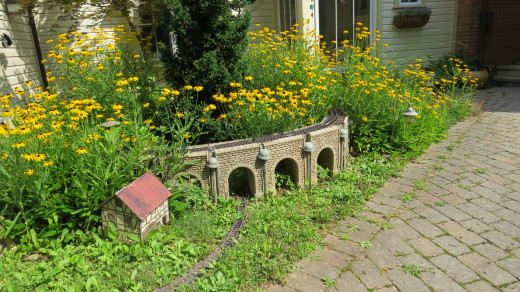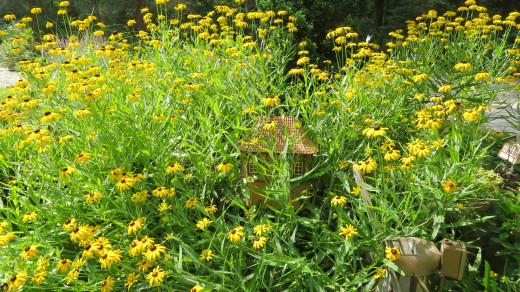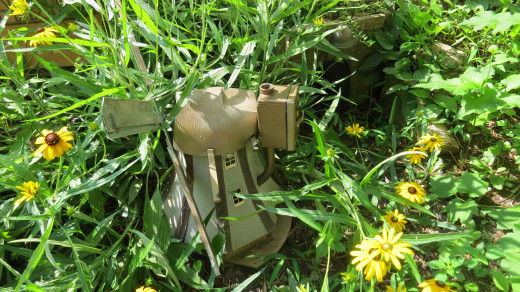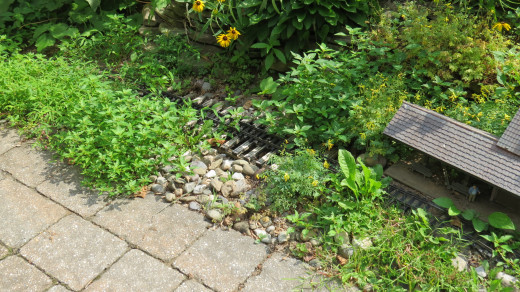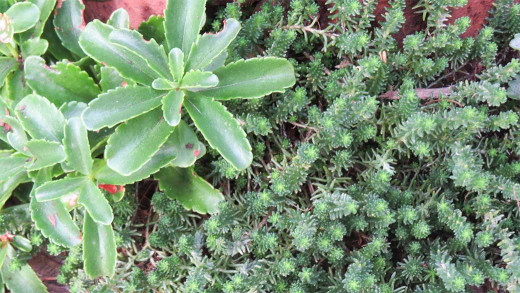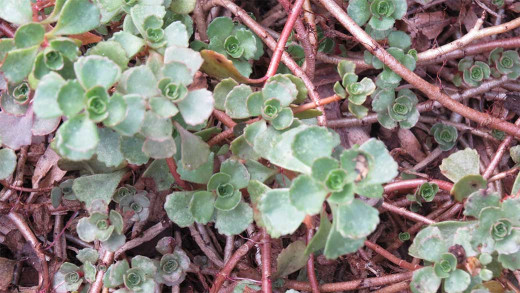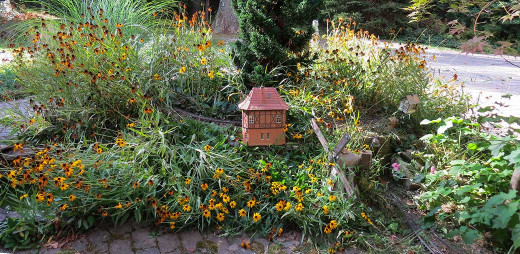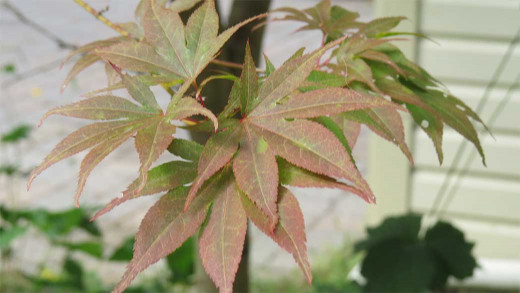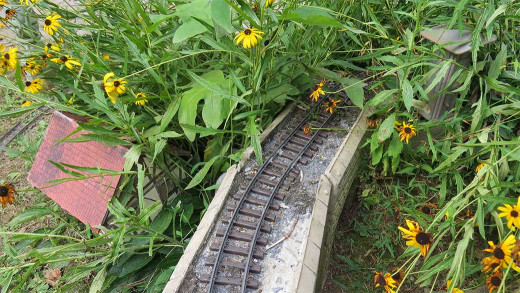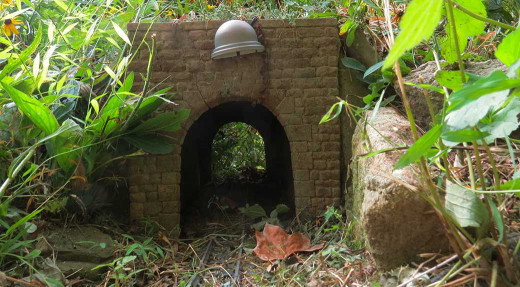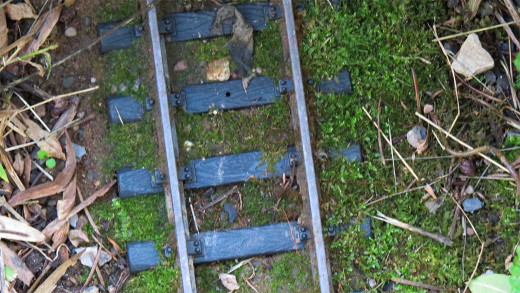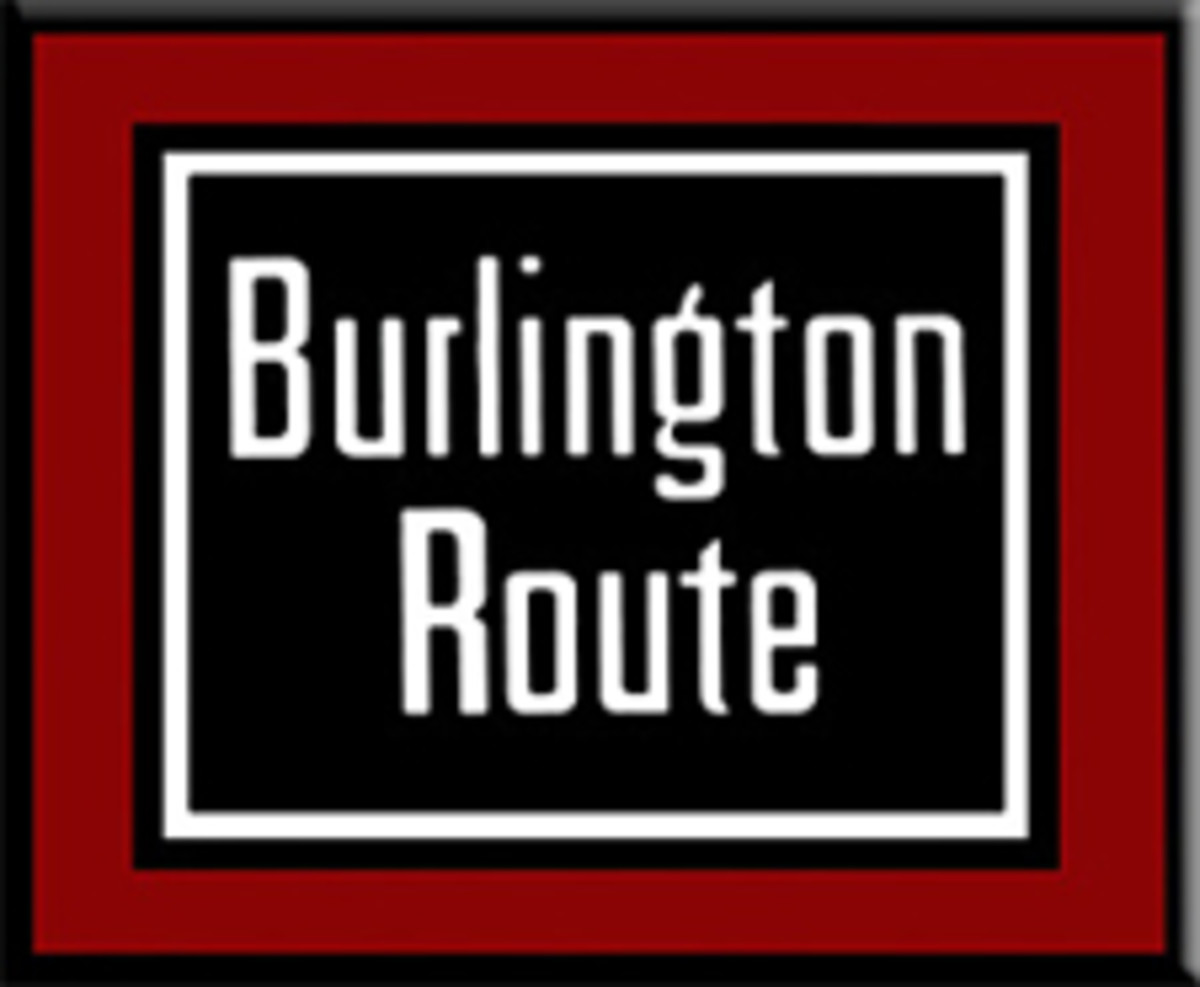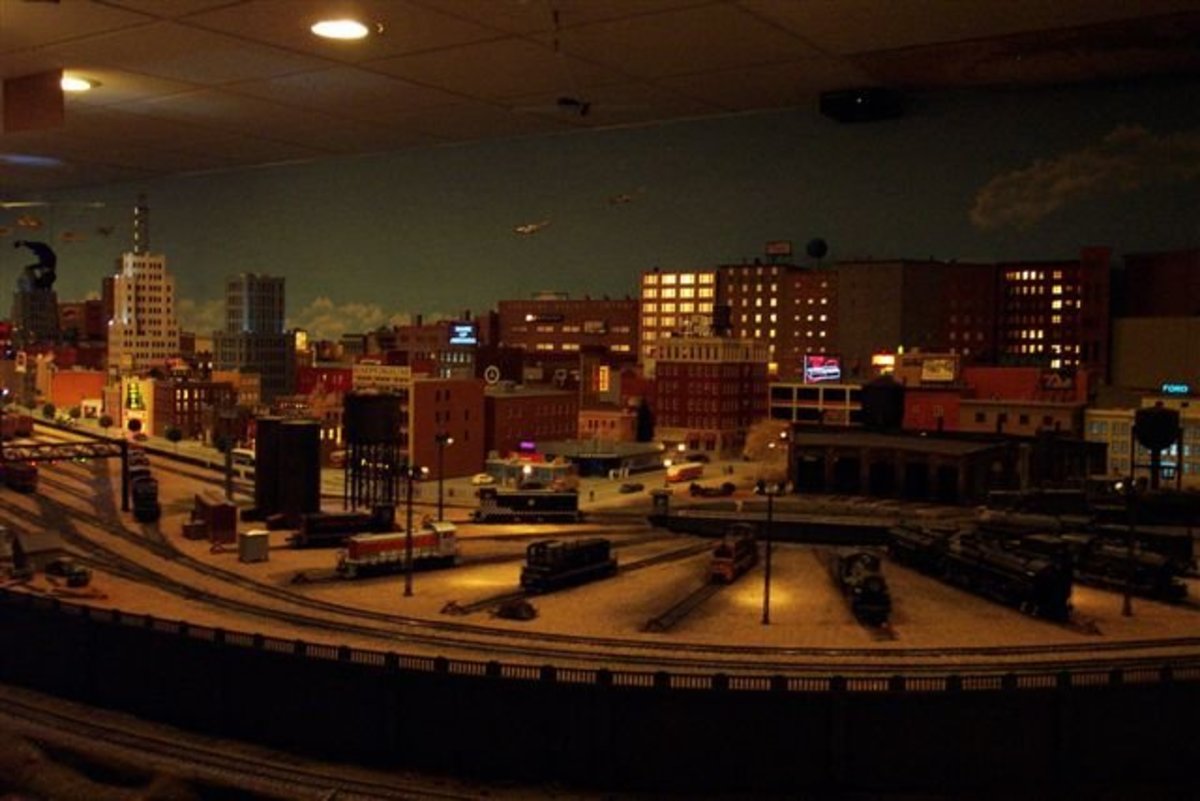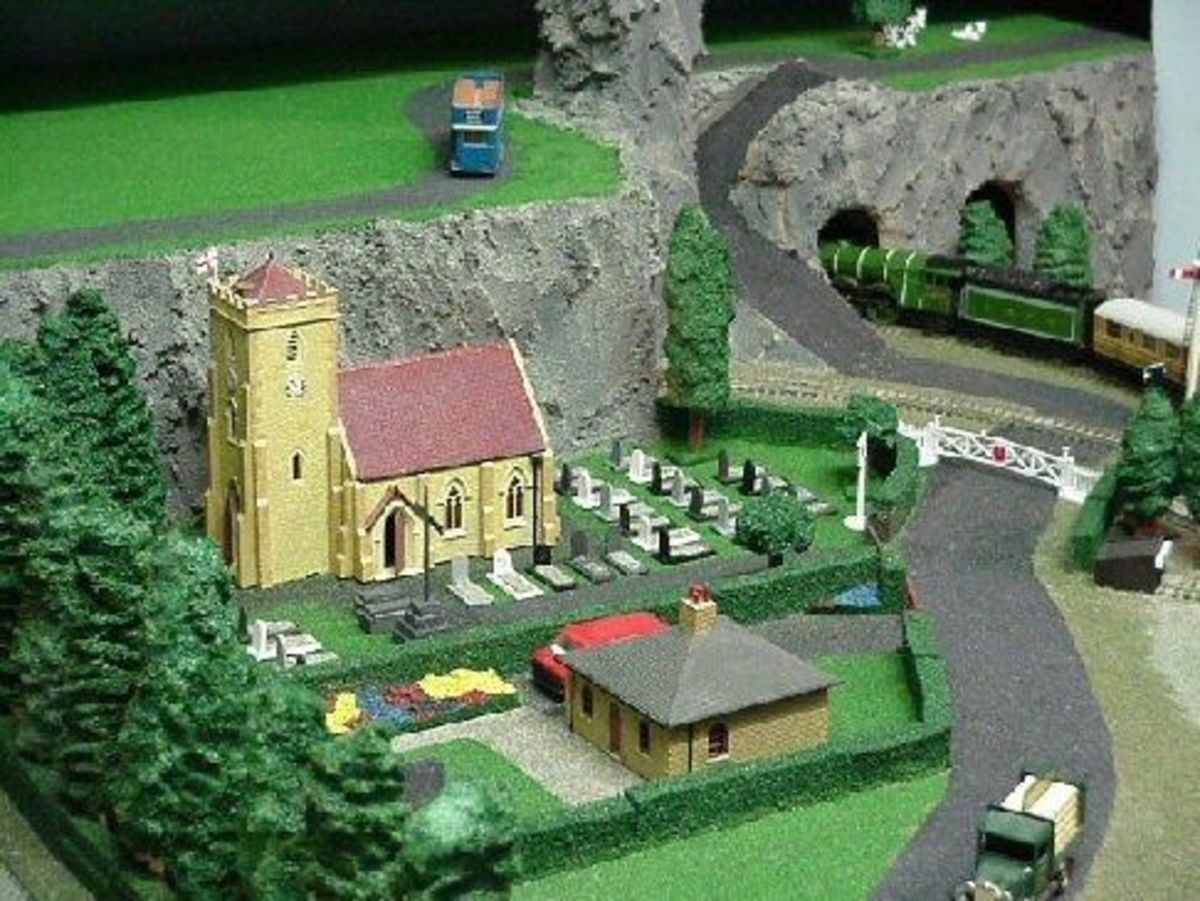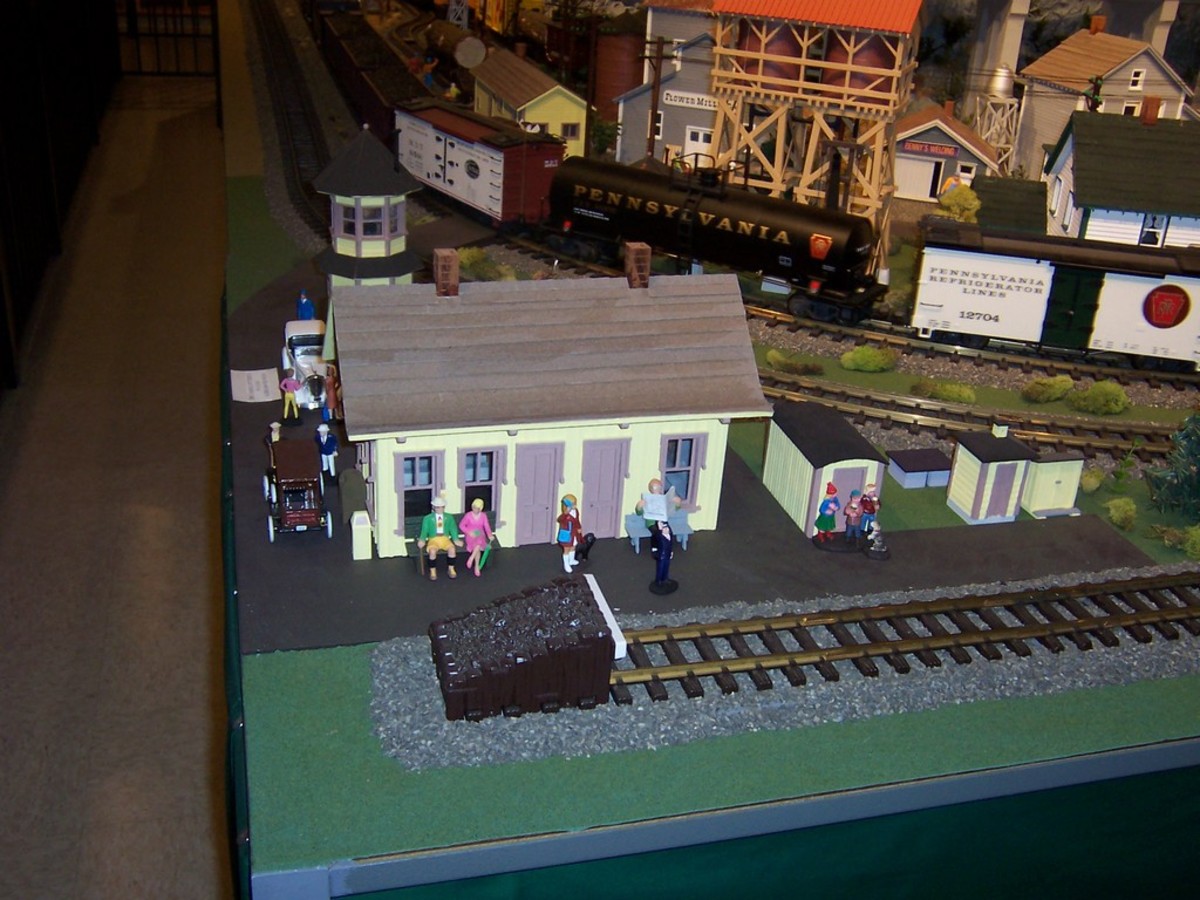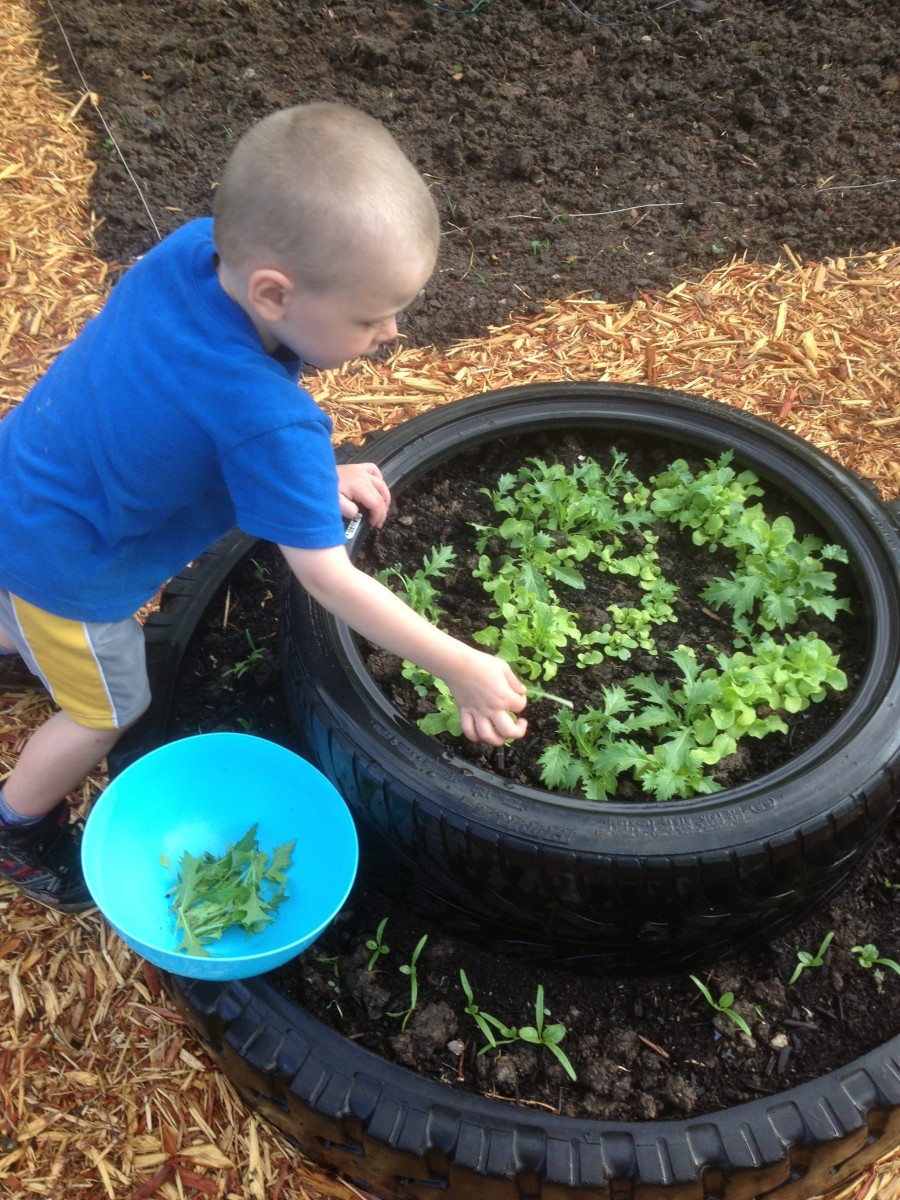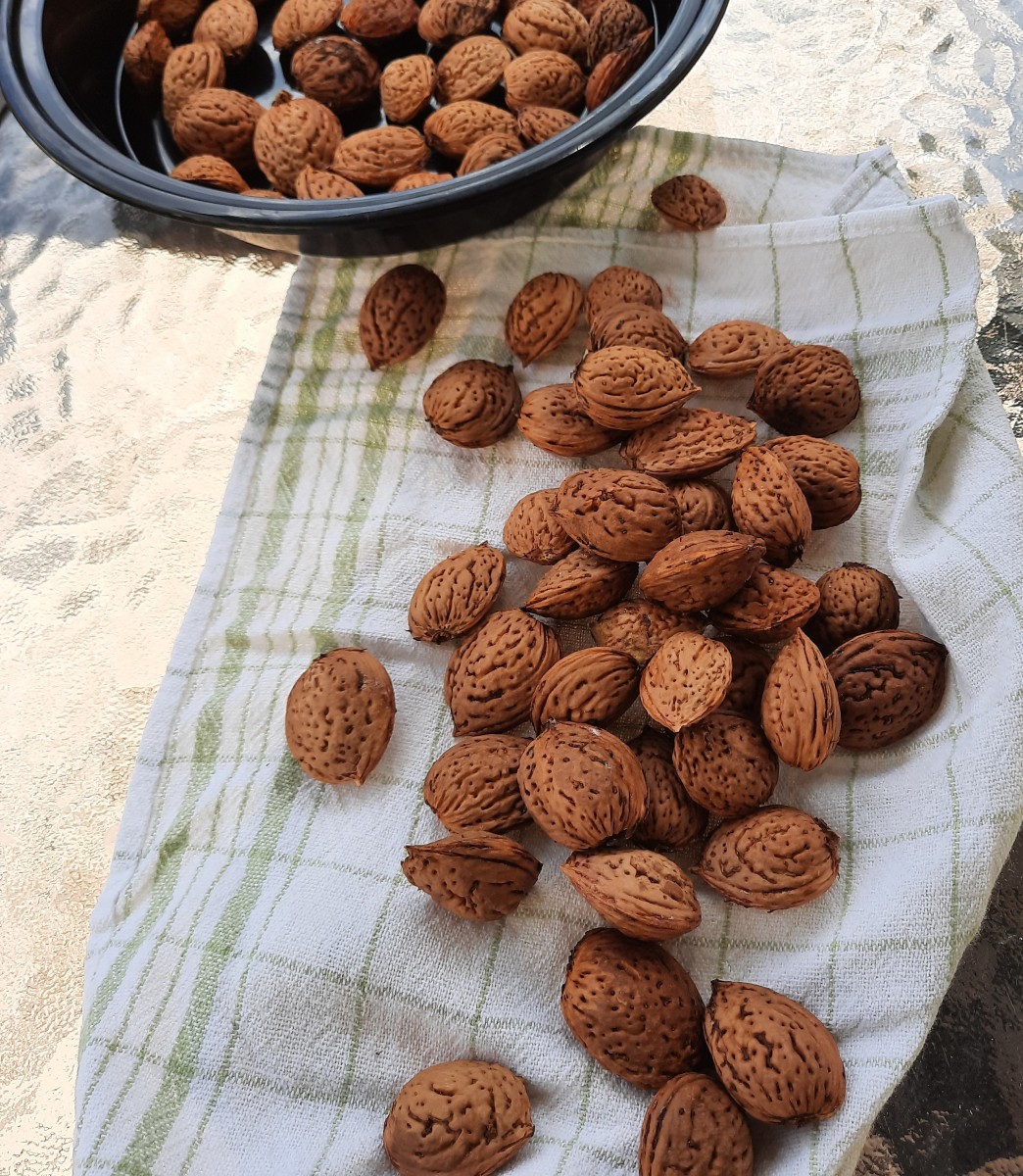How To Build A Garden Railroad
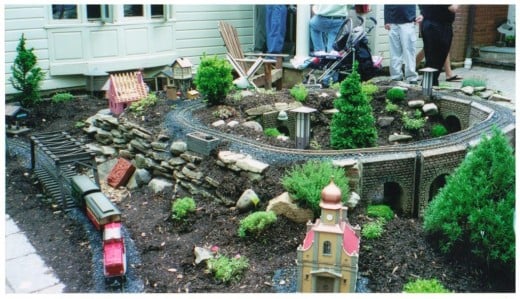
Garden railroading is more than a pastime of situating toy trains upon soil and melding hardscape to landscape. Each undertaking requires mental and physical fortitude. Each project becomes an outdoor living space.
This article documents over a decade of tinkering and building our train garden. We set out converting part of our backyard into a magical, miniature town. What also transpired were musings and objectives of lessons learned and tips we picked up along the way.
Interspersed are milestone photographs that my dad and I took. At the end is a summary of the process. As you continue, each of 10 steps is structured by:
- thought comments,
- what-we-did measures, and
- ACTION to-do suggestions.
Enjoy the trip!
Newly Planted Elevated Rail & Pond
Click thumbnail to view full-size
What Is the Difference Between Gauge & Scale?
First, let's clarify two terms that often get confused. Gauge refers to track size, specifically the space between the tops of the rails. Our train rides on gauge No. 1 track, which measures 45 mm. or about 1.75 inches. Scale is the size of a model in proportion to its prototype (real train). Our trains are G scale, with a 1:22.5 ratio to full size.
Step 1: Dream
While daydreaming, you get an idea. Could it become a reality? Anything is possible. Let your brainstorm take hold and see what unfolds.
We decided to build a garden railroad for simple pleasure rather than attempting a complex endeavor or an engineering feat.
ACTION: Imagine your layout. Where will it be located? What will it look like? Explore others' sites and discover historical perspectives.
First Steam Engine in America
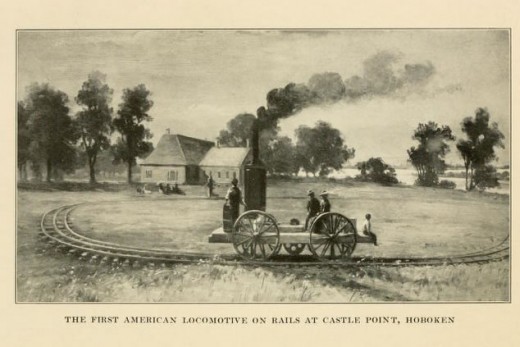
Bekonscot since 1929
History of Garden Railroads
I started with Wikipedia's "Timeline of United States Railway History" to learn about the past, which begins with the 1810s - 1830s. Trial models were made before full size trains operated. In 1825 an inventor named Colonel John Stevens (1749-1838) tested a "steam carriage" on the lawn of his Hoboken home (see above). His "first American locomotive" was the predecessor of things to come.
Small replicas were built to introduce prototype lines. By 1860 toy facsimiles were customized for rich clients. Even though systems were not uniform, interest heightened in Germany and Great Britain.
In 1891 German toy firm Marklin marketed standards for large-scale collections: Gauge 1, 2, and 3. Zero soon appeared, later called 0 ("oh"), with Lionel promoting their American Standard Gauge in 1906.
Smaller sizes for inside use became more popular after WWII to the detriment of outside railroading. Nevertheless, several 1920s garden railways prevailed, such as The Fairplex Garden Railroad in California (Pomona, near LA) and Bekonscot Model Railway (UK, see map above).
The book "Garden Railways" (1949, published in Britain) wrote about the hobby of combining the two activities. In 1968 German toy company Ernst Paul Lehmann revived outside Gauge 1 track focus by introducing their large G scale plastic LGB trains.
American enthusiasm flourished in the 1980s, with clubs emerging. "Garden Railways" magazine started in 1984 and LGB introduced its first American-prototype model in 1985.
Our Story
How the above history relates to us is that my dad started giving me trains at Christmas when I was a baby. My mom then gave him a subscription to a train magazine. We ultimately wanted to fabricate a landscaped layout. And, the rest is our story to share with you.
Garden Train Progress
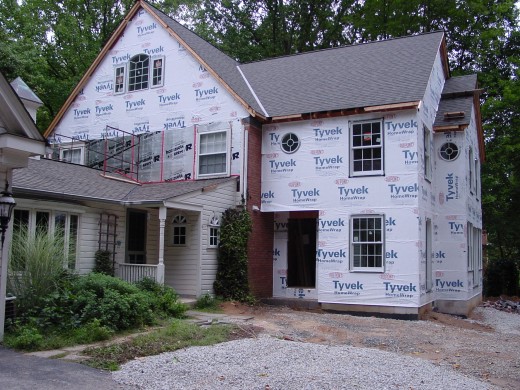
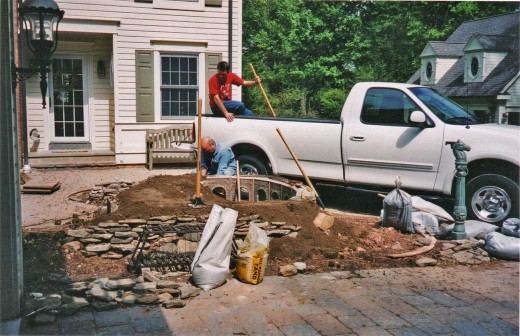
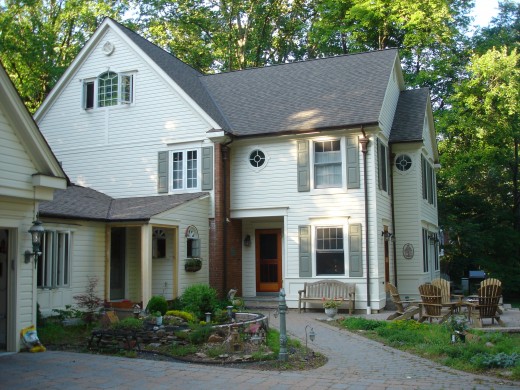
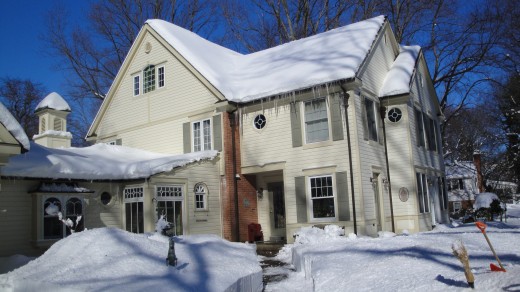
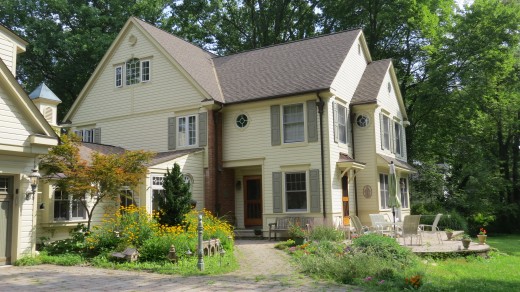
Step 2: Plan
Although Step 1 never ends, at some point you must figure out how to bring your dream to fruition. Until something is symbolized, such as drawing and writing, it's just an idea. The plan makes the intangible - tangible.
In this case, the railroad needed to be laid out. Nowadays you see all sorts of dazzling pictures. However, when we began this project, even YouTube ceased to exist. I still used AltaVista for searching and the results were trying. Back then Borders (the bookstore) was still in business. Fortunately, train resources guided our way.
ACTION: Select, survey, and design the space for your garden railroad. Inventory components that you already have, such as cars, buildings, and track. Otherwise, begin with a starter kit.
Sketch A Design
Jot down your ideas by drawing features and focal points. This template is not static and will probably change as you add or take away elements. Ours certainly did.
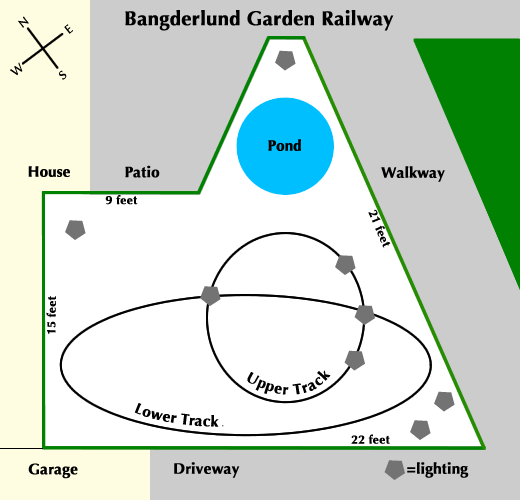
Mature Garden
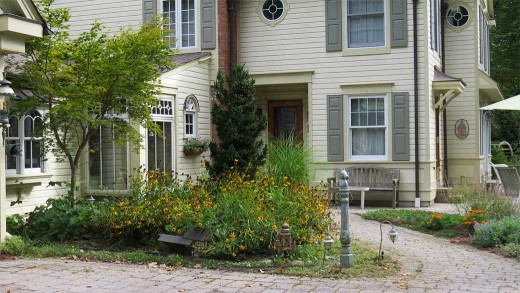
Tip: Do Not Dig Willy-Nilly
Where are your utility lines located? Do not excavate the ground of your space unless you know what lies underneath it. If you have any doubts whatsoever, access call811 "before-you-dig" and pinpoint by state or province. Another preemptive step is to check with your local municipality or library for advice.
Virgin Ground
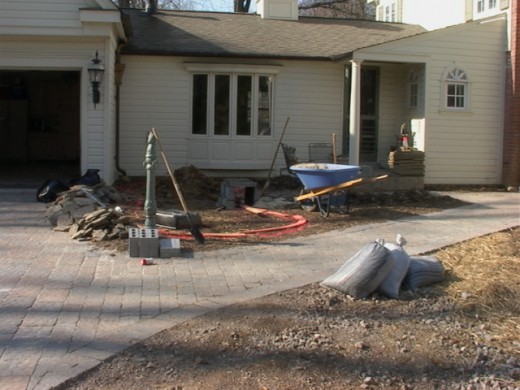
Rail Layout
We put our actual track on plywood and cut out pieces to place on the ground. Then we spray painted the ground along each side to designate positioning (as shown next).
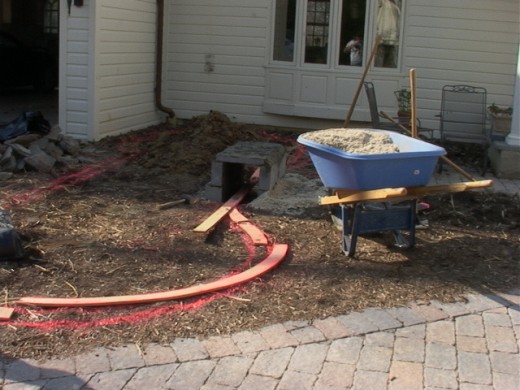
Step 3: Make
You have the plan, now you need to execute. If a project is 10% inspiration and 90% perspiration, then start making something.
So now we actually had to do this project. As you get up early on that Saturday, wondering what-the-heck-am-I-doing-making-a-model-railroad-as-a-grown-man, something takes you forward. We got to work.
ACTION: In his "Beginner's Guide To Large Scale Model Railroading" Russ Larson (1998) said this stage includes "bullwork" (p. 65). Major emphasis is necessary to:
- Assemble, mark, and disassemble temporary track.
- Excavate for roadbed and special features.
- Construct roadbed foundation and special features.
- Lay permanent track.
- Secure tracks with ballast. (Ballast is the top material that supports tracks and provides drainage.)
Building Up the Site
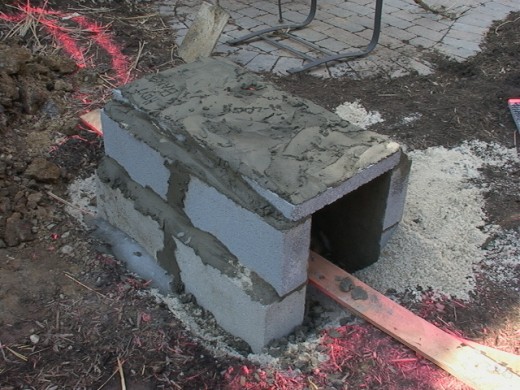
Step 4: Try & Fail
Like Step 1, Step 4 keeps happening. My grandfather used to say if he failed 30% of the time he was doing pretty darn good. Assume this attempt fails? Cry. Get nervous. Do some jumping jacks. Get the angst out. Now are you OK? What's next? That's right. Back to work.
- So we set up the track and the train couldn't get going around the bend.
- It snowed and the engine sputtered.
- The original pond leaked and was a mess. We had to build a new one.
Tricky Step 4 recurs, and you need to be aware of this certainty early on. Failing is a condition for betterment.
ACTION: Operating trains requires diligence and patience. Set up the power controls (in a convenient spot, if possible) and install wiring. Test and retest the circuitry. Remember, the outdoor lighting.
Garden Train Operations & Storage
Click thumbnail to view full-size






Step 5: Test & Ask
This step requires input. You need to discern what people really think by weighing their reactions. Also test yourself. Step back. Try approaching with a new set of eyes.
Caution: Step 5 could have figuratively (maybe literally, too) taken the steam out of our trains. We were tired. The railway looked good to us. My dad was grouchy. I was exasperated. My mother didn't like the job looking half-baked. My dad's coworker thought it needed lots of finishing touches. My friends wondered why I enjoyed such a hobby.
After a good night's rest, my dad and I discussed concerns, those of others, and our own. Yes, we agreed more work was necessary. We wanted to feel (inside) and display (outside) the Wow Factor for our model train tract.
ACTION: Seek feedback. Read noteworthy blogs and watch how-to videos. Participate in forums.
Tip: Get A Building Buddy
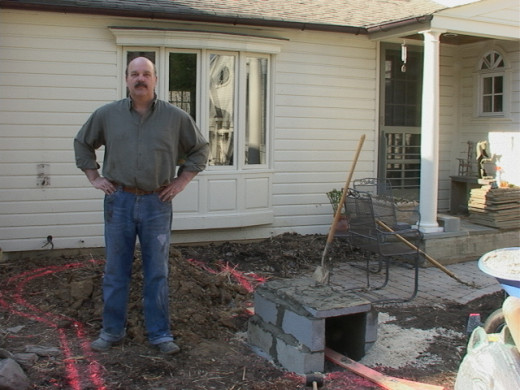
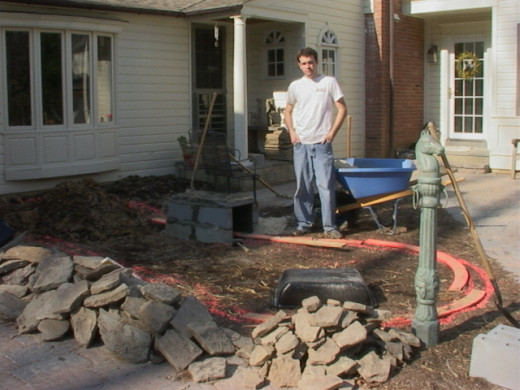
Step 6: Perfect (the verb)
Unlike Step 4, Step 6 involves the little-good-enough things you could (and sometimes do) let slide. Since details make a big difference, keep tweaking, creating the best you can.
For a time, trains excited us more than plants. Ugh. We needed to garden. Nevertheless, instead of simply plopping in what-were-available varieties, we gave this phase due consideration and achieved equilibrium.
ACTION: Enhance with scenery. Enrich the soil and plant. Add buildings and figures.
Our Winter Wonderland
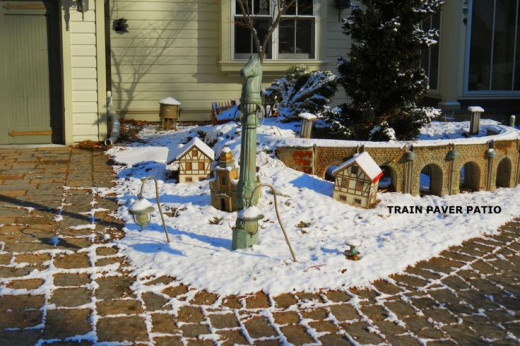
Tip: Verify Your Gardening Zone
The most recent 2012 USDA plant hardiness map covers 30 years of averages (1976-2005) thought by experts to be a better estimate than the previous 1990 map's span (1974-1986).
What is the zone for your area?
From the United States Department of Agriculture (USDA) interface, browse a map of your state, your region, or the entire US. For Canada, go to the National Resources Canada site.
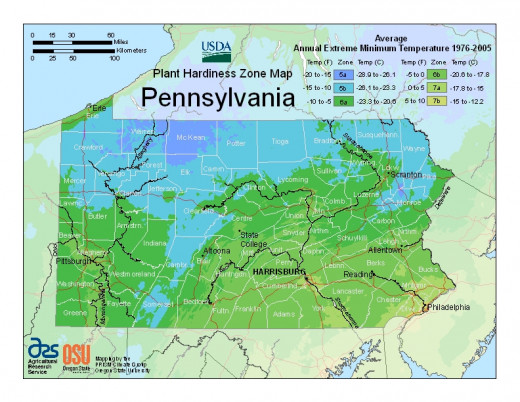
Step 7: Love (it)?
Happy? Do you "love" the end product? Did anything irritate you? Is something gnawing at you? If so, it will not go away.
Our boxwood didn't survive the cold spell. The pump for the pond kept breaking down and bugged us to no end. We had to take a break.
ACTION: Sit back and ASSESS. Peruse records and notes to critique your status. How have you chronicled your progress?
Watch Your Garden Grow
Click thumbnail to view full-size







Step 8: Live (with it)
Step 8 is a bit of a plateau. Now you have to live with your work of art. The time of construction has passed and you move to the next beat like on a sheet of music. Living with something requires maintenance no matter what it is. Do you want to maintain or move on? Is it still fun?
Reaping the benefits of our labors was indeed a highlight. And then, it was time to weed.
ACTION: Tend to the railroad garden space. Replant as necessary. Address seasonal necessities. Prepare for special occasions (e.g., in winter we brush snow off the track & decorate the tree).
Track Maintenance
Periodically inspect and clean the tracks. When applicable, replace ballast. In autumn we re-patch with polymeric stone dust. Misted with water it stays flexible during freeze-thaw cycles and the grey color and stony texture look like the real thing.
Also, rake debris and check light fixtures. Deal with the unexpected as need be.



Step 9: Reflect
What did you learn? How have you changed? What would you do differently? How can your experience benefit others? How can your experience benefit your next experience? Figure out how to share your lessons learned. After all this work (and time), you're allowed to embellish. Show off.
We held my graduation party outdoors, around our garden train.
ACTION: Unlike Step 7, do not merely evaluate the project. Analyze your approach by reviewing the process (see ours below). Genuinely contemplate how YOU have been affected. Spread garden railroading knowledge in order to move outward. Join a club.

Step 10: Educate
You could stop at Step 9 for sure. And yet, you could stop at Step 1. You learned how to complete something by finding your own way. From your experience you can teach others what you learned.
While sharing my perspectives, I had these adages in mind:
- Give a person a fish to eat for a day.
- Teach a person to fish to eat for a lifetime.
ACTION: Tell someone about the joy of building a garden railway. Engaging in this hobby foreshadows enjoying it forever.
Summary of the Process
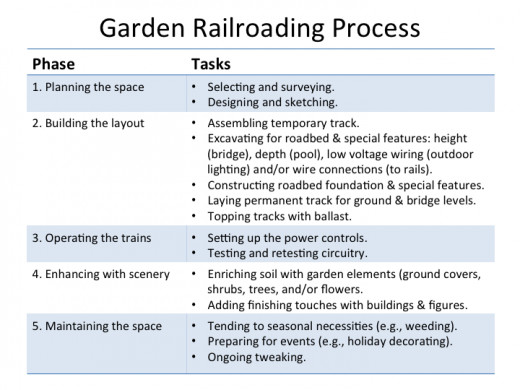
All Aboard
So that's how we went about building our model train project. And, please take a short ride (in the video below). Constructing one adds a unique flavor to a property that I've tried my best to demonstrate. Yes, maintenance is necessary, but I assure you: It's Worth It!
In all, garden railroading is a gratifying adventure.
